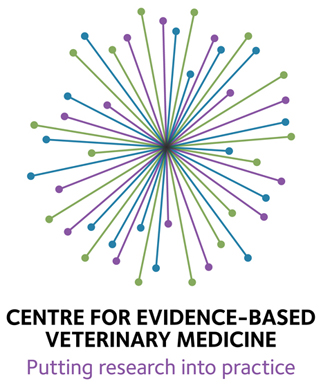Introduction
This lecture had surprisingly little information about acupuncture itself. It began with a review of the pathophysiology of spinal cord injury and the typical steps for evaluating and stabilizing patients presenting with acute spinal cord injury. Most of the treatments discussed were standard, conventional therapies (surgery, anti-inflammatory and analgesic medications, exercise and physical therapy, etc), and it was emphasized that acupuncture and the other alternative treatments recommended were not intended as substitutes for standard conventional care.
This reinforces the fact that unlike course offered by the Chi Institute and others promoting a TCM perspective, the instructors of this course are making a sincere effort to approach the subject of acupuncture from a science-based perspective. I have disagreed with a number of their conclusions about acupuncture so far, but I believe their claims and the evidence they present are worth evaluating seriously, unlike the obvious mythological nonsense of TCM. Just as I challenge the stereotypes and clichés put forward about conventional medicine and veterinarians who practice it, it is important that as skeptics we not stereotype or prejudge people who make claims that we find dubious or ultimately reject as untrue.
The emphasis of the lecture was on the relationship between the physiology of spinal cord injury and the goals of therapy- controlling pain, preventing secondary injury associated with inflammation, ischemia, and other factors following the initial trauma, and preserving and restoring neurologic function. In general, the claims made for specific therapies, including acupuncture, were based on the plausible mechanism identified in the pre-clinical and animal model literature I have already acknowledged exists for needling and, especially, electrical stimulation using acupuncture needles.
My main objection to some of these claims I that they trust the translation from experimental studies to clinical patients more than I think is justified. Just because preclinical studies find effects by which acupuncture and other therapies might work doesn’t mean they will work in real patients. It only means that some clinical research is justified. And to date, that research either hasn’t been done or has been limited and unconvincing for most of the methods described in this lecture.
Non-acupuncture Therapies Suggested for Spinal Cord Injury
I will briefly discuss the main non-acupuncture therapies suggested as possible adjuncts to standard care.
- Polyethylene Glycol (PEG)-
PEG, and the related compound P 188, are polymers that are hypothesized to protect and facilitate repair in damaged nerve tissue. Most of the research on the effects of PEG in spinal cord injury have been rodent model studies. A systematic review identified 5 studies involving systemic administration of PEG (as opposed to direct application to the spinal cord, which would not be practical in most veterinary patients), most in rodents and one in dogs:
The extensive body of literature from Dr. Borgens’ lab on the use of PEG in a guinea-pig model of SCI has arguably served as the basis for interest in PEG as a neurooprotective agent.
Of the five studies identified in this systematic review, three utilized Wistar or Sprague Dawley rats with either clip compression or contusion injuries, one utilized a guinea-pig model with a forcep crush injury, and one utilized canines who suffered paraplegia from intervertebral disc herniations…Subcutaneously injected PEG was reported to be effective with a delay in intervention of 6?h post injury (Borgens and Bohnert, 2001), and dogs treated with PEG within 72?h of injury were reported to recover better than historical controls. In a rat SCI model, a 1-h time window of efficacy was reported by Baptiste and colleagues (2009).
With respect to non-behavioral outcomes, PEG was reported to decrease NF200 degradation, reduce apopotosis, and improve tissue sparing at the lesion site (Baptiste et al., 2009). In contrast, Kwon and colleagues (2009) and Ditor and colleagues (2007) found no significant tissue neuroprotection with PEG alone. With respect to behavioral outcomes, Borgens and Bohnert (2001) reported improved electrophysiologic recordings and the return of the cutaneous truncal muscle reflex after PEG treatment, and reported improved hindlimb recovery in PEG-treated dogs as compared to historical controls. Baptiste and colleagues (2009) reported modest improvements in BBB scores in PEG-treated animals, but no improvement on inclined plane testing. Ditor and colleagues (2007) also reported very modest improvement in BBB scores and a reduction in allodynia with PEG treatment.
This research suggests there might be some beneficial effects, though the effect size and clinical relevance cannot be determined from such lab animal studies. The canine study is the most relevant to veterinary use of PEG:
Laverty PH, Leskovar A, Breur GJ, Coates JR, Bergman RL, Widmer WR, Toombs JP, Shapiro S, Borgens RB. A preliminary study of intravenous surfactants in paraplegic dogs: polymer therapy in canine clinical SCI. J Neurotrauma. 2004 Dec;21(12):1767-77.
In this study, 19 dogs were treated with surgery and steroids (which are now quite controversial and less frequently used) as well as PEG or P 188. The outcomes were compared against historical records of dogs with similar disease treated in the past. This sort of design introduces a lot of potential confounding factors, so the results must be viewed cautiously. In this case, the PEG-treated dogs recovered better than the historic controls, however those dogs generally did much worse than is typically reported for dogs receiving standard care.
No subsequent clinical trials have yet been published, although one funded by the Morris Animal Foundation is underway at the North Carolina State University veterinary college. PEG remains a potentially useful but as yet unproven adjunctive therapy for dogs with spinal cord injury. The studies so far have not identified any significant risks, though more research is needed to ensure safety as well as efficacy.
2. Oscillating electrical fields-
Various forms of electrical stimulation have been found, in in vitro or animal model studies, to have effects on damaged nerve tissue that might potentially be beneficial to patients. And as previously discussed, some of the most positive research on acupuncture involves so-called “electroacupuncture,” which arguably is just another method of providing electrical stimulus with little in common with historical acupuncture practices. There is some limited clinical research suggesting possible beneficial effects of oscillating electrical field stimulus. According to a recent review:
This oscillating field stimulator (OFS) has been tested in two studies in dogs with sub-acute spinal injuries, with beneficial outcomes.41,42 These studies led to a phase 1 trial with an OFS in humans with acute traumatic SCI.43 The stimulator was implanted within 3 weeks after injury, and remained in place for 15 weeks. The stimulation provided significant improvement in two measures of sensory sensitivity and in seven out of nine patients improved motor scores were observed, compared to historical data for untreated patients. Although an erratum was later published concerning some discrepancies in functional scoring, the fundamental conclusions of the trial are still compelling.
-
Borgens RB., Toombs JP., Blight AR., McGinnis ME., Bauer MS., Widmer WR., and Cook JR., Jr.: Effects of applied electric fields on clinical cases of complete paraplegia in dogs. Restor Neurol Neurosci 1993; 5:305.
-
Borgens RB., Toombs JP., Breur G., Widmer WR., Waters D., Harbath AM., March P., and Adams LG.: An imposed oscillating electrical field improves the recovery of function in neurologically complete paraplegic dogs. J Neurotrauma 1999; 16:639.
-
Shapiro S., Borgens R., Pascuzzi R., Roos K., Groff M., Purvines S., Rodgers RB., Hagy S., and Nelson P.: Oscillating field stimulation for complete spinal cord injury in humans: a phase 1 trial. J Neurosurg Spine 2005; 2:3.
3. Hyperbaric Oxygen (HBOT)-
I have summarized the evidence for hyperbaric oxygen therapy in detail before. My overall conclusion was:
HBOT is a biologically plausible therapy with substantial in vitro and animal model research to support possible benefits in a variety of conditions. There is, however, almost no clinical trial evidence to support its use in companion animal species. Justification of veterinary use of HBOT comes only from extrapolation from basic principles, pre-clinical research, anecdote, and extrapolation from research in humans, so this should be viewed as an unproven, experimental veterinary therapy.
There are a few indications for which the human clinical trial research provides at least a moderate degree of confidence that HBOT is effective. There are many others for which there is only limited and low-quality evidence and no clear conclusion can be drawn. Not all uses validated in humans are relevant to veterinary use, and most veterinary applications have not been directly studied in people. Overall, the evidence is strongest for adjunctive use of HBOT to facilitate healing of chronic wounds not resolving with standard therapies….For my part, it suggests to me that HBOT is a promising therapy for a variety of indications but not clearly demonstrated effective for very many even in humans, and the veterinary evidence is too weak to be very useful in making recommendations.
A systematic review of HBOT for spinal cord injury has been published:
Ninety-three studies were identified in the database Pubmed. Among these, through a set of inclusion/exclusion criteria, 11 articles published between 1963 and 2009 were selected. In the nine experimental studies, different ways to apply the treatment were observed. The measured outcomes were: functional, histological, biochemical and electrophysiological.
In most of the studies, the results show recovery of locomotor function, histology and/or biochemical features. Regarding the two studies in clinical samples, the results are controversial. The samples are heterogeneous and the application of hyperbaric oxygen therapy is not the same for all patients in each study. Considering the results of this review, further studies are necessary to define the role of hyperbaric oxygen therapy in acute spinal cord injury.
This does not amount to very strong evidence to recommend HBOT for dogs and cats with spinal cord injury.
4. Antioxidants-
This is, of course, a pretty broad and vague category. Oxidative damage has been identified as a component to secondary injury in cases of spinal cord trauma, so it is reasonable to hypothesize antioxidants might have some clinical value. However, similar reasonable hypotheses regarding the role of antioxidants in aging, cancer, and other health conditions have not held up well to rigorous investigation, so a reasonable hypothesis alone is not sufficient. A couple of examples will illustrate the complex and inconsistent research results in this area:
Yao M, Yang L, Wang J, Sun YL, Dun RL, Wang YJ, Cui XJ. Neurological recovery and antioxidant effects of curcumin for spinal cord injury in the rat: a network meta-analysis and systematic review. J Neurotrauma. 2015 Mar 15;32(6):381-91. doi: 10.1089/neu.2014.3520. Epub 2015 Jan 9.
Eight studies with adequate randomization were selected and included in the systematic review. Two studies had a higher methodological quality. Overall, curcumin appears to significantly improve neurological function, as assessed using the Basso, Beattie, Bresnahan (BBB) locomotor rating scale (four studies, n=132; pooled mean difference [MD]=3.09; 95% confidence interval [CI], 3.40-4.45; p=0.04), in a random-effects model and decrease malondialdehyde (MDA) using a fixed-effects model (four studies, n=56; pooled MD=-1.00; 95% CI=-1.59 to -0.42; p=0.00008). Effect size, assessed using the BBB scale, increased gradually with increasing curcumin dosage. The difference between low- and high-dose curcumin using the BBB scale was statistically significant. Neurological recovery and antioxidant effects of curcumin were observed in rats with SCI despite poor study methodological quality.
Cristante AF1, Barros Filho TE, Oliveira RP, Marcon RM, Rocha ID, Hanania FR, Daci K. Antioxidative therapy in contusion spinal cord injury. Spinal Cord. 2009 Jun;47(6):458-63. doi: 10.1038/sc.2008.155. Epub 2008 Dec 9.
Forty male Wistar rats were used, divided into four groups of 10 animals each. Group 3 received vitamin C 100 mg kg(-1) day(-1) intraperitoneally; Group 2 received vitamin E 100 mg kg(-1) day(-1) orally; Group 1 received vitamins C and E, at the same dosages; and Group 4 was the control. The vitamin therapy was administered for 1 month and then the animals were killed. A direct contusional injury was caused and functional evaluation was performed using the Basso, Beattie and Bresnahan rating scale. The rats were evaluated on the second postoperative day and weekly thereafter, until the end of the experiment.
The results were evaluated by means of the one-tailed, non-paired and non-parametric Mann-Whitney test, comparing the groups two by two. No significant difference in functional performance was observed between the groups.
The use of vitamins C and E in these rats did not improve their neurological performance. However, histopathological examination showed that the inflammatory response was less intense following administration of the combination of vitamins C and E.
The general idea that antioxidants must be good for spinal cord injury is not supportable. However, it is possible that some specific agents might provide some clinical benefit in some situations. Unfortunately, there hasn’t yet been much clinical research to identify these.
5. Stem Cells-
I have also written about stem cell therapies often, and again the conclusion has bene that there is promising preclinical research but very little in the way of clinical evidence for efficacy in specific conditions. This is certainly true for veterinary patients, and with regard to spinal cord injury specifically, the evidence is very preliminary:
Antonic A, Sena ES, Lees JS, Wills TE, Skeers P, Batchelor PE, Macleod MR, Howells DW. Stem cell transplantation in traumatic spinal cord injury: a systematic review and meta-analysis of animal studies. Stem Cells- PLoS Biol. 2013 Dec;11(12):e1001738. doi: 10.1371/journal.pbio.1001738. Epub 2013 Dec 17.
One hundred and fifty-six publications using 45 different stem cell preparations met our prespecified inclusion criteria. Only one publication used autologous stem cells. Overall, allogeneic stem cell treatment appears to improve both motor (effect size, 27.2%; 95% Confidence Interval [CI], 25.0%-29.4%; 312 comparisons in 5,628 animals) and sensory (effect size, 26.3%; 95% CI, 7.9%-44.7%; 23 comparisons in 473 animals) outcome. For sensory outcome, most heterogeneity between experiments was accounted for by facets of stem cell biology. Differentiation before implantation and intravenous route of delivery favoured better outcome. Stem cell implantation did not appear to improve sensory outcome in female animals and appeared to be enhanced by isoflurane anaesthesia. Biological plausibility was supported by the presence of a dose-response relationship. For motor outcome, facets of stem cell biology had little detectable effect. Instead most heterogeneity could be explained by the experimental modelling and the outcome measure used. The location of injury, method of injury induction, and presence of immunosuppression all had an impact. Reporting of measures to reduce bias was higher than has been seen in other neuroscience domains but were still suboptimal. Motor outcomes studies that did not report the blinded assessment of outcome gave inflated estimates of efficacy. Extensive recent preclinical literature suggests that stem-cell-based therapies may offer promise, however the impact of compromised internal validity and publication bias mean that efficacy is likely to be somewhat lower than reported here.
Wolfram Tetzlaff. A Systematic Review of Cellular Transplantation Therapies for Spinal Cord Injury. J Neurotrauma. 2011 Aug; 28(8): 1611–1682.
Cell transplantation therapies have become a major focus in pre-clinical research as a promising strategy for the treatment of spinal cord injury (SCI). In this article, we systematically review the available pre-clinical literature on the most commonly used cell types in order to assess the body of evidence that may support their translation to human SCI patients….162 studies were identified and reviewed in detail, emphasizing their behavioral effects (although not limiting the scope of the discussion to behavioral effects alone). Significant differences between cells of the same “type” exist based on the species and age of donor, as well as culture conditions and mode of delivery. Many of these studies used cell transplantations in combination with other strategies. The systematic review makes it very apparent that cells derived from rodent sources have been the most extensively studied, while only 19 studies reported the transplantation of human cells, nine of which utilized bone-marrow stromal cells. Similarly, the vast majority of studies have been conducted in rodent models of injury, and few studies have investigated cell transplantation in larger mammals or primates. With respect to the timing of intervention, nearly all of the studies reviewed were conducted with transplantations occurring subacutely and acutely, while chronic treatments were rare and often failed to yield functional benefits.
6. Laser-
This is yet another plausible, promising, and unproven therapy I have written about at length. (Here, here, and most recently here). The little bit of clinical research specifically on treatment of spinal cord injury in dogs is mixed and inconclusive. Rodent model studies have provided some suggestion of possible benefits, but again there is no convincing clinical trial evidence that laser really helps actual clinical patients.
Ando T, Sato S, Kobayashi H, Nawashiro H, Ashida H, Hamblin MR, Obara M. Low-level laser therapy for spinal cord injury in rats: effects of polarization. J Biomed Opt. 2013 Sep;18(9):098002. doi: 10.1117/1.JBO.18.9.098002.
The effects of laser polarization on the efficacy of near-infrared low-level laser therapy for spinal cord injury (SCI) are presented. Rat spinal cords were injured with a weight-drop device, and the lesion sites were directly irradiated with a linearly polarized 808-nm diode laser positioned either perpendicular or parallel to the spine immediately after the injury and daily for five consecutive days. Functional recovery was assessed daily by an open-field test. Regardless of the polarization direction, functional scores of SCI rats that were treated with the 808-nm laser irradiation were significantly higher than those of SCI alone group (Group 1) from day 5 after injury. The locomotive function of SCI rats irradiated parallel to the spinal column (Group 3) was significantly improved from day 10 after injury, compared to SCI rats treated with the linear polarization perpendicular to the spinal column (Group 2). There were no significant differences in ATP contents in the injured tissue among the three groups. We speculate that the higher efficacy with parallel irradiation is attributable to the deeper light penetration into tissue with anisotropic scattering.
Paula AA, Nicolau RA, Lima Mde O, Salgado MA, Cogo JC. Low-intensity laser therapy effect on the recovery of traumatic spinal cord injury. Lasers Med Sci. 2014 Nov;29(6):1849-59.
The objective of this study was to investigate the effect of the LILT (GaAlAs laser-780 nm) on the locomotor functional recovery, histomorphometric, and histopathological changes of the spinal cord after moderate traumatic injury in rats (spinal cord injury at T9 and T10). Thirty-one adult Wistar rats were used, which were divided into seven groups: control without surgery (n?=?3), control surgery (n?=?3), laser 6 h after surgery (n?=?5), laser 48 h after surgery (n?=?5), medullar lesion (n?=?5) without phototherapy, medullar lesion?+?laser 6 h after surgery (n?=?5), and medullar lesion?+?laser 48 h after surgery (n?=?5). The assessment of the motor function was performed using Basso, Beattie, and Bresnahan (BBB) scale and adapted Sciatic Functional Index (aSFI). The assessment of urinary dysfunction was clinically performed. After 21 days postoperative, the animals were euthanized for histological and histomorphometric analysis of the spinal cord. The results showed faster motor evolution in rats with spinal contusion treated with LILT, maintenance of the effectiveness of the urinary system, and preservation of nerve tissue in the lesion area, with a notorious inflammation control and increased number of nerve cells and connections. In conclusion, positive effects on spinal cord recovery after moderate traumatic spinal cord injury were shown after LILT.
Acupuncture for Spinal Cord Injury
The clinical trial evidence for acupuncture in dogs with spinal cord injury is limited, at high risk of bias, and confounded by the use of electrical stimulation through acupuncture needles (e.g. Here). There is, however some clinical trial evidence in humans suggesting possible benefits:
Heo I, Shin BC, Kim YD, Hwang EH, Han CW, Heo KH. Acupuncture for spinal cord injury and its complications: a systematic review and meta-analysis of randomized controlled trials. Evidence-Based Complementary and Alternative Medicine 2013; 2013: 364216.
To evaluate the evidence supporting the effectiveness of acupuncture treatment for SCI and its complications, we conducted search across 19 electronic databases to find all of the randomized controlled trials (RCTs) that used acupuncture as a treatment for SCI and its complications. The methodological quality of each RCT was assessed using the Cochrane risk of bias tool and the PEDro scale. Sixteen RCTs, including 2 high-quality RCTs, met our inclusion criteria (8 for functional recovery from SCI, 6 for bladder dysfunction, and 2 for pain control).
The meta-analysis showed positive results for the use of acupuncture combined with conventional treatments for the functional recovery in terms of motor ASIA scores and total FIM scores when compared to conventional treatments alone. Positive results were also obtained for the treatment of bladder dysfunction, in terms of the total efficacy rate, when comparing acupuncture to conventional treatments. However, 2 RCTs for pain control reported conflicting results.
Our systematic review found encouraging albeit limited evidence for functional recovery, bladder dysfunction, and pain in SCI. However, to obtain stronger evidence without the drawbacks of trial design and the quality of studies, we recommend sham-controlled RCTs or comparative effectiveness research for each condition to test the effectiveness of acupuncture.
Ma Ruijie, Liu Xin, Clark Justin, Williams Gail M., and Doi Suhail A.. The Impact of Acupuncture on Neurological Recovery in Spinal Cord Injury: A Systematic Review and Meta-Analysis. Journal of Neurotrauma. 2015. epub ahead of print. doi:10.1089/neu.2014.3866.
The effect of acupuncture on neurological recovery in individuals with SCI remains inconclusive despite previous studies and meta-analyses. The aim of the current study was to perform a more rigorous systematic review and bias-adjusted meta-analysis of studies so that the overall impact of acupuncture on neurological recovery in SCI can be determined. Randomized controlled trials (RCTs) only were included and were searched for in seven databases through to August 2014. Four key outcomes were assessed: neurological recovery, motor function, sensory function, and functional recovery. Several statistical approaches were compared, models were tested for robustness using sensitivity analysis, and results are presented as weighted mean difference (WMD) or standardized mean difference (SMD) for continuous outcomes and relative risk (RR) for binary outcomes. The included studies’ susceptibility to bias was also assessed. A total of 12 studies were included after exclusions were applied. Heterogeneity was evident among the studies included.
Pooled analyses showed that acupuncture may have a beneficial effect on neurological recovery (RRs: 1.28, 95% confidence interval [CI]: 1.12–1.50), motor function (WMD: 6.86, 95% CI: 0.41–13.31), and functional recovery (SMD: 0.88, 95% CI: 0.56–1.21) and all statistical approaches concurred. Sensitivity analyses suggested that the smaller studies (sample size <30), those with acute disease, and studies that used varying acupuncture sessions demonstrated a larger magnitude of effect. However, studies were generally of poor quality and publication bias favoring positive studies was evident. Therefore, the benefit of acupuncture we report is by no means definitive and well-designed future studies are recommended to confirm this.
Even this relatively weak positive evidence must be viewed in context, however. I have discussed the issue of publication bias in the acupuncture literature before. Systematic reviews often originate from China or Chinese researchers, and there is evidence that there is a particularly large problem with publication bias in this area. One study from 1998 found absolutely no negative acupuncture studies had ever been published in China to that point. Subsequent reviews have identified significant risk of bias in the acupuncture literature:
Bin Ma, Guo-qing Qi, Xiao-ting Lin, Ting Wang, Zhi-min Chen, and Ke-hu Yang. Epidemiology, Quality, and Reporting Characteristics of Systematic Reviews of Acupuncture Interventions Published in Chinese Journals. The Journal of Alternative and Complementary Medicine. September 2012, 18(9): 813-817.
A total of 88 SRs were identified; none of the reviews had been updated. Less than one third (27.3%) were written by clinicians and one third (35.2%) were reported in specialty journals. The impact factor of 53.4% of the journals published was 0. Information retrieval was not comprehensive in more than half (59.1%) of the reviews. Less than half (36.4%) reported assessing for publication bias. Though 97.7% of the reviews used the term “systematic review” or “meta-analysis” in the title, no reviews reported a protocol and none were updated even after they had been published after 2 or more years….Although many SRs of acupuncture interventions have been published in Chinese journals, the reporting quality is troubling.
Yuyi Wang, Liqiong Wang, Qianyun Chai, Jianping Liu. Positive results in randomized controlled trials on acupuncture published in chinese journals: a systematic literature review. J Altern Complement Med 2014 May;20(5):A129
This review found 847 reported randomized clinical trials of acupuncture in Chinese journals. 99.8% of these reported positive results. Of those that compared acupuncture to conventional therapies, 88.3% found acupuncture superior, and 11.7% found it as good as conventional treatments. Very few of the studies properly reported important markers of quality and control for bias such as blinding, allocation concealment, and losses to follow-up.
So while there is some positive research suggesting acupuncture may have beneficial effects in spinal cord injury, it is generally weak and subject to a significant risk of bias.
Bottom Line
This lecture was generally science-based and focused on the physiology of spinal cord injury and many standard conventional treatments. A number of non-standard therapies were also suggested. All of these, including acupuncture, have reasonable pre-clinical research evidence suggesting effects which might be clinically beneficial. However, for most of these therapies, there is very little clinical research and it is limited and not robust. For acupuncture specifically, there is weak clinical trial evidence suggesting possible benefits for this condition. However, there is a well-known problem with adequately controlling for placebo effects in acupuncture trials, and there is a significant problem with publication bias in the acupuncture literature, so these results have to be viewed with significant skepticism.









